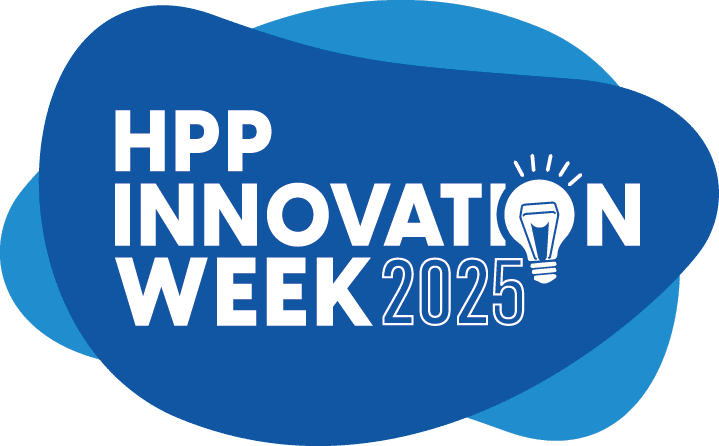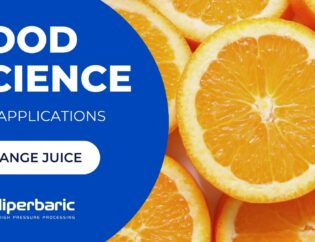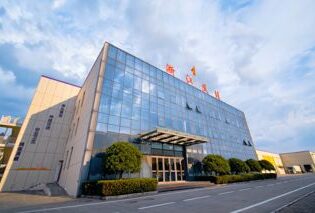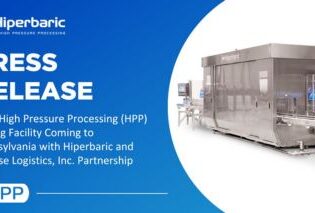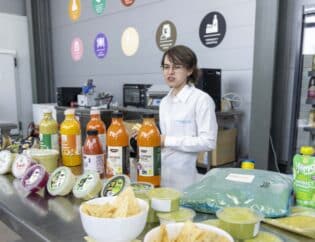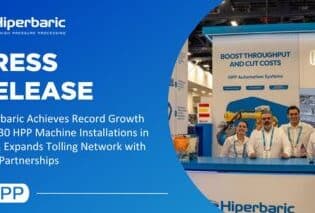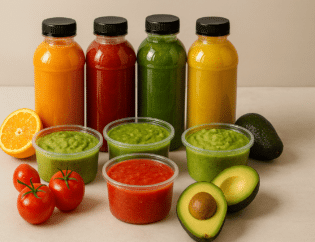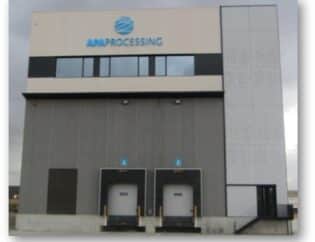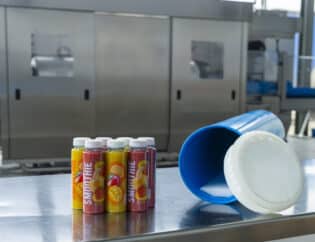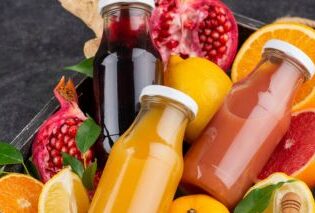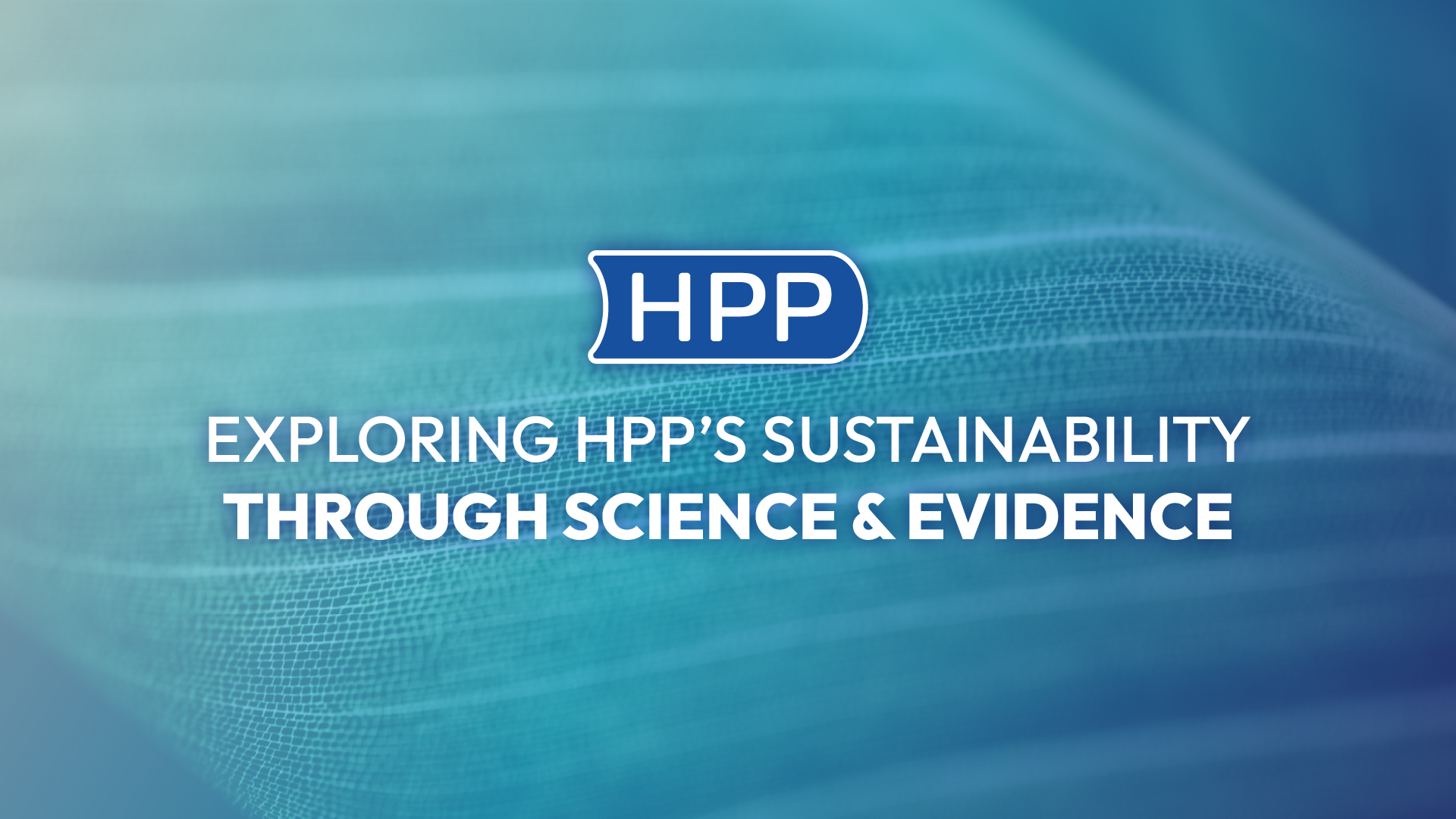
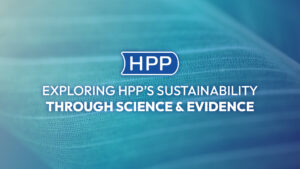
High Pressure Processing (HPP) is a non-thermal preservation technology that ensures food safety and extends shelf life while keeping products fresh, natural, and nutritionally rich. Beyond these well-known benefits, HPP also represents an opportunity to align food manufacturing with global sustainability goals by reducing waste and environmental impact. In this article, we take a closer look at the sustainability landscape of HPP, examining how it performs across key areas such as water and energy efficiency, waste reduction, and packaging innovation. Each section highlights scientific findings and real-world data that illustrate the technology’s potential to make food processing cleaner, safer, and more resource-efficient.
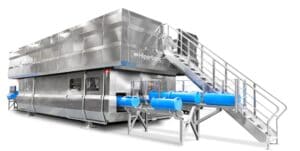
Environmental Impact of HPP
Water Use Efficiency
In HPP, water plays a crucial role as the medium that transmits pressure and keeps products safe without heat. It works by transmitting extremely high levels of pressure through water to the already packaged product, inactivating pathogens and spoilage microorganisms. While it might seem like a water-intensive process, Hiperbaric’s systems are designed for exceptional efficiency: up to 85% of the water is recovered and recirculated in every cycle, and the remaining 15% can be redirected for other uses, such as plant cleaning.
As shown by Muñoz et al. (2022), HPP exhibits substantially lower water consumption compared to thermal pasteurization, confirming its superior efficiency in this parameter.
Water efficiency of HPP for a fish soup (2x 5200 bar; 5’)
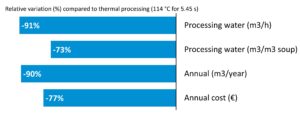
Energy Use Efficiency
HPP is a 100% electrified technology, making it fully compatible with renewable energy sources. Energy consumption per unit of product depends on factors such as vessel filling ratio and product-specific parameters. By optimizing cycle conditions and maximizing vessel occupancy, producers can significantly reduce the energy footprint.
Another key advantage is that HPP is a non-thermal process, so products don’t require post-heating or cooling stages. A step that often consumes considerable energy in traditional methods. As a result, HPP systems can achieve meaningful energy savings while maintaining the highest safety and quality standards.
Nutrient Retention and Human Health
Beyond operational efficiency, HPP offers a sustainability co-benefit through its positive impact on nutrition and public health. Multiple studies (Huang et al., 2018; de Souza et al., 2020; Wu et al., 2021; Yuan et al., 2022) have shown that vitamin C degradation and antioxidant loss are significantly lower in HPP-treated products compared to thermally pasteurized ones.
Over-extended storage periods of up to 120 days in some studies, beverages treated with HPP retained higher antioxidant levels and nutritional value. This improved nutrient stability contributes to reduced nutrient-related food waste and supports the broader goal of offering healthier, minimally processed foods.
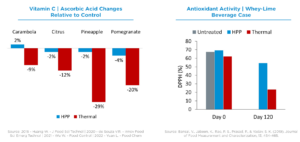
HPP vs. Thermal Processing: Quantified Benefits
When comparing environmental impacts head-to-head, HPP demonstrates clear advantages over thermal pasteurization. According to Cacace et al. (2020), applying HPP to orange juice results in an average 17% reduction in Global Warming Potential (GWP). This improvement reflects lower energy intensity and the elimination of cooling stages that dominate the carbon footprint of conventional heat-based methods.
As visualized in the comparative graph, HPP consistently outperforms thermal techniques across multiple environmental indicators, offering a scalable path toward the decarbonization of food preservation.
Environmental Impact of HPP vs. Thermal for Orange Juice Production
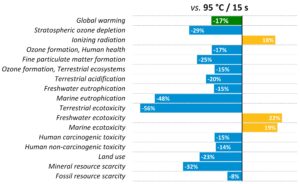
Type of Waste in Food Processing
Waste in food manufacturing generally falls into three main categories: packaging waste, liquid effluents, and food waste. Understanding how HPP interacts with each of these forms of waste is key to evaluating its sustainability performance.
Packaging Waste
In High Pressure Processing, packaging is more than just a container. It plays an integral role in the process itself. Because HPP relies on water to transmit pressure, packaging must be flexible, hermetically sealed, and water-resistant to withstand up to 6,000 bar of pressure while protecting the product. For this reason, plastic polymers such as PET, PP, PE, PA, and EVOH are commonly used.
However, several Life Cycle Assessment (LCA) studies have shown that packaging often represents the most resource-intensive component of the HPP process. For instance, research on pineapple juices indicates that the packaging stage can have 2–3 times greater impact than the HPP step itself, mainly due to the high energy use in producing virgin PET bottles and their limited recyclability (Cacace et al., 2020; Paini et al., 2022).
Life Cycle Impact Distribution in Pineapple Juice: Production, Packaging, and HPP
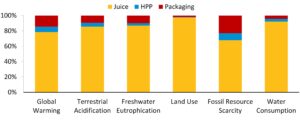
Alternative packaging materials
Encouragingly, innovation in sustainable materials is reshaping how producers approach HPP-compatible packaging:
- Recycled PET (rPET) bottles can significantly reduce environmental impacts compared to virgin PET.
- Bioplastics such as Polylactic Acid (PLA), derived from renewable crops, offer biodegradable and compostable options for single-use containers.
- Enhanced biodegradability additives are also being introduced to conventional PET formulations, allowing certain components to be digested by microorganisms after disposal.
Environmental Impact of PET vs rPET Bottles in HPP
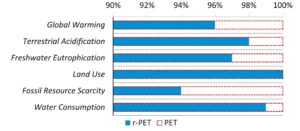
The World’s First Keg for HPP
A notable advancement in sustainable beverage packaging is the HPP-compatible keg co-developed by Petainer and Hiperbaric. This innovative format enables the processing and distribution of large beverage volumes, ideal for foodservice applications where drinks are served directly from the tap. Compared to 250 mL individual bottles, this format reduces packaging material by up to 97% per liter, optimizes logistics, and lowers the carbon footprint per serving.
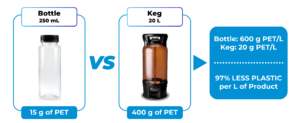
HPP vs. Modified Atmosphere Packaging (MAP)
Comparative research, such as Cacace et al. (2020) in Innovative Food Science & Emerging Technologies, highlights that HPP generally has a lower environmental impact than Modified Atmosphere Packaging (MAP). For example, in vacuum-packed Parma ham, the HPP process achieved a notably lower global warming potential, demonstrating its environmental advantages in ready-to-eat and protein-based applications.
Impact of HPP vacuum-packed ham compared to MAP Parma ham
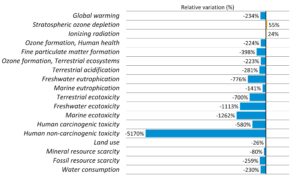
Liquid Effluents
Traditional thermal pasteurization processes often generate high-temperature liquid effluents containing product residues and cleaning agents, which require additional energy and chemical treatment before disposal. In contrast, HPP produces virtually no contaminated liquid waste. The water used as a pressure transmission medium is filtered, recirculated, and reused across multiple cycles, minimizing both environmental impact and operational costs.
Food Waste
Food waste in manufacturing mainly stems from spoilage, microbial contamination, and short shelf life. HPP helps address all three challenges simultaneously.
By inactivating pathogens such as Listeria monocytogenes, HPP ensures food safety, preventing recalls and the associated product losses. Moreover, by extending shelf life while maintaining taste, texture, and nutrition, HPP helps reduce the disposal of still-edible foods.
A study by Villamonte et al. (2014) presented at LCA Food demonstrated that applying HPP to meat products extends shelf life with less than 0.1% increase in key environmental indicators such as global warming potential, acidification, and eutrophication.
One of the most effective ways to reduce food waste is through upcycling, and HPP plays a crucial complementary role by enabling the safe transformation of surplus food into high-quality products. The Canadian brand Loop Mission, for instance, uses HPP to transform surplus fruits and vegetables, which would otherwise be discarded, into safe, high-quality juices. Each bottle contains up to 1.4 kg of rescued produce, showing how HPP can actively support circular economy principles while preserving fresh-like quality for several months.
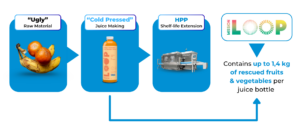
Technological Advancements: Hiperbaric HPP In-Bulk
The next leap in HPP sustainability comes with Hiperbaric’s HPP In-Bulk technology, the first system worldwide capable of processing beverages before bottling. This patented innovation not only lowers overall processing costs and energy consumption but also offers two major sustainability advantages:
- No packaging constraints – Because the process treats liquid before packaging, manufacturers can use containers made from non-flexible, recyclable, or eco-friendly materials, expanding the range of sustainable options.
- Higher production efficiency – With a processing capacity of over 4,000 liters per hour, the In-Bulk system reduces energy consumption per liter and minimizes handling steps, creating a more efficient and integrated workflow.
Additionally, its fully automated and continuous design allows seamless integration into existing beverage lines without intermediate handling, improving both operational efficiency and sustainability.
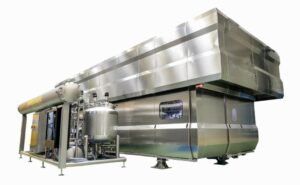
Conclusion
High Pressure Processing has evolved into a benchmark for sustainable food preservation. Its low water requirements, absence of polluted effluents, and ability to reduce food waste make it a cornerstone of environmentally conscious production.
Packaging plays an essential role in HPP. While packaging often has a greater environmental impact than the HPP process itself, innovative and more sustainable alternatives are emerging. Hiperbaric continues to advance in this area through developments such as the HPP in-bulk technology and the first HPP keg created in collaboration with Petainer.
As shown across multiple independent studies and real-world data, HPP stands as a proven, scalable, and renewable-ready solution that aligns food safety, quality, and sustainability into one powerful technology.

